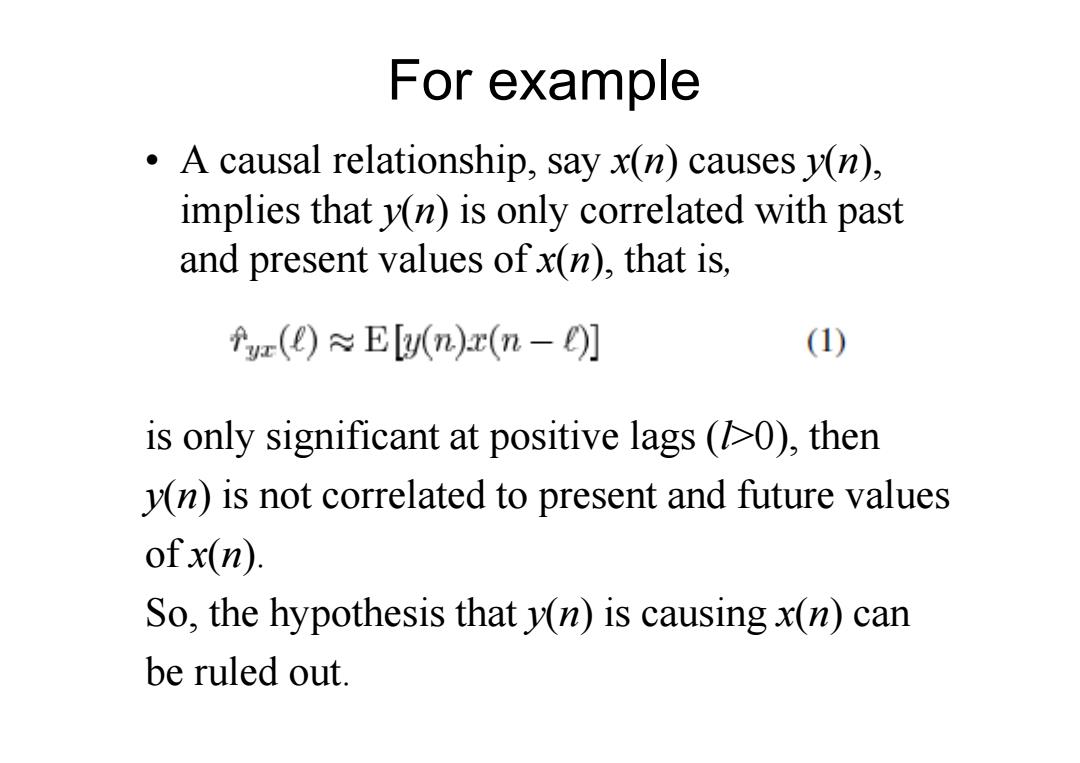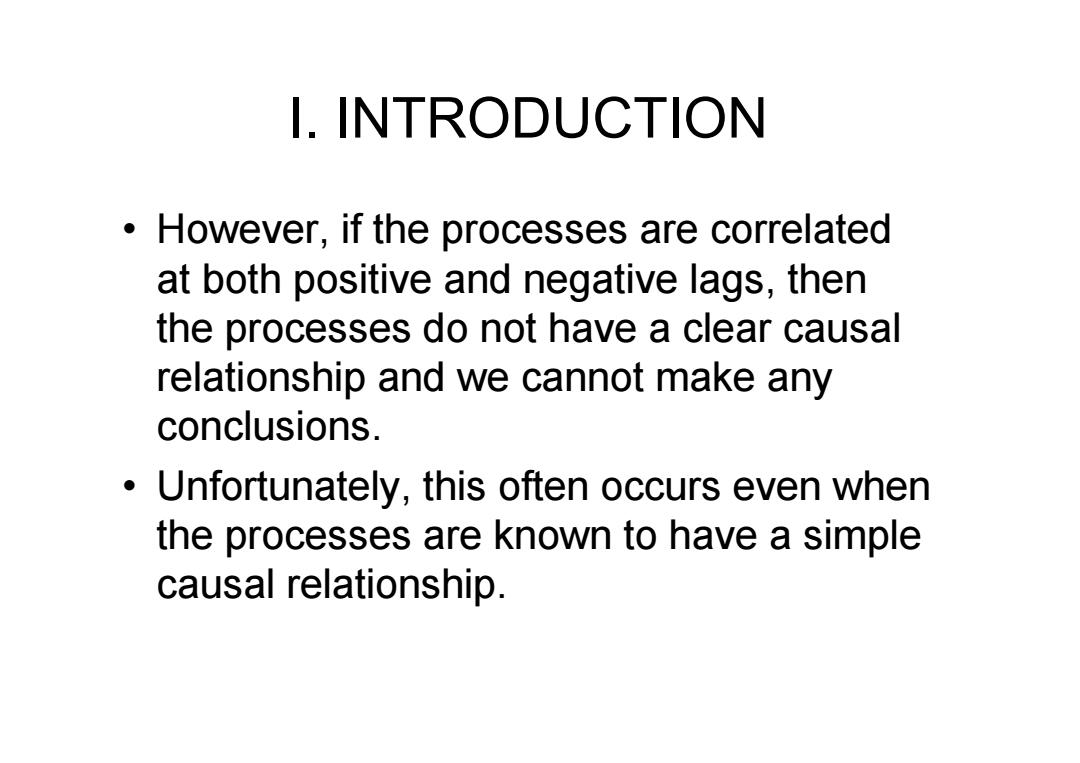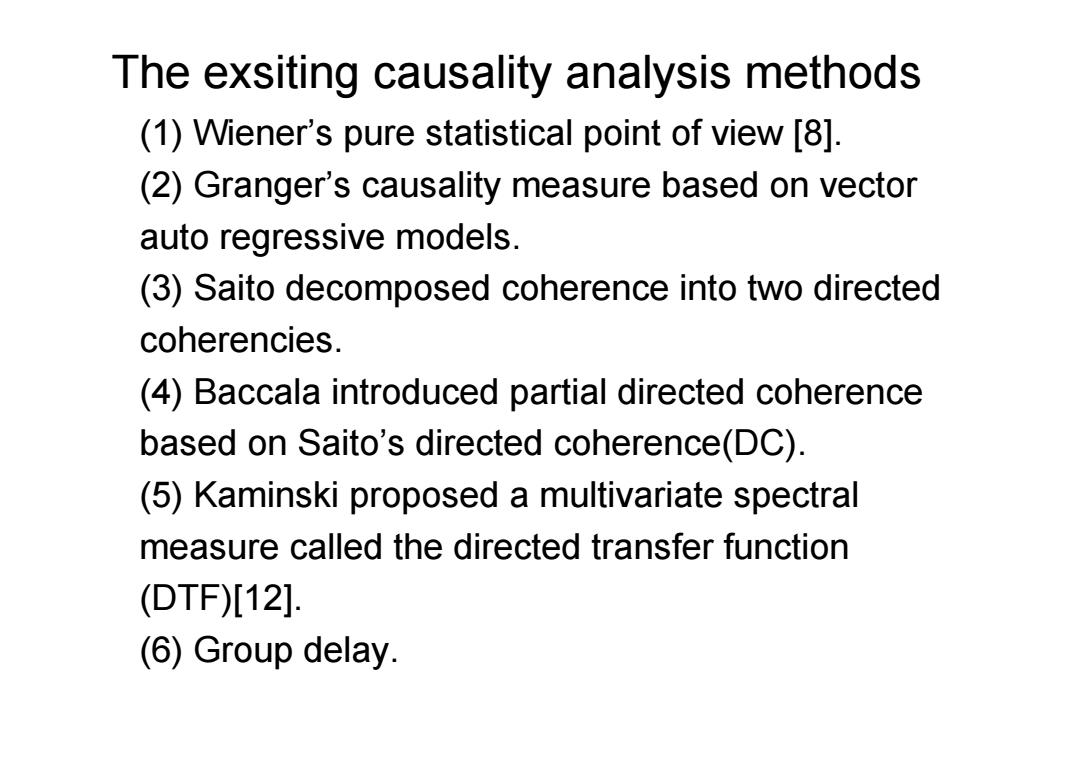
I.INTRODUCTION Causality cannot generally be determined from Signal analysis alone; However,we may be able to statistically distinguish between several possible causal relationships with cross-correlation analysis
I. INTRODUCTION Causality cannot generally be determined from Signal analysis alone; However, we may be able to statistically distinguish between several possible causal relationships with cross-correlation analysis

For example A causal relationship,say x(n)causes v(n), implies that y(n)is only correlated with past and present values ofx(n),that is, fa()≈E[n)x(n-)] (1) is only significant at positive lags (10),then v(n)is not correlated to present and future values ofx(n). So,the hypothesis that y(n)is causing x(n)can be ruled out
For example • A causal relationship, say x(n) causes y(n), implies that y(n) is only correlated with past and present values of x(n), that is, is only significant at positive lags (l>0), then y(n) is not correlated to present and future values of x(n). So, the hypothesis that y(n) is causing x(n) can be ruled out

I.INTRODUCTION However,if the processes are correlated at both positive and negative lags,then the processes do not have a clear causal relationship and we cannot make any conclusions. Unfortunately,this often occurs even when the processes are known to have a simple causal relationship
I. INTRODUCTION • However, if the processes are correlated at both positive and negative lags, then the processes do not have a clear causal relationship and we cannot make any conclusions. • Unfortunately, this often occurs even when the processes are known to have a simple causal relationship

The exsiting causality analysis methods (1)Wiener's pure statistical point of view [8]. (2)Granger's causality measure based on vector auto regressive models. (3)Saito decomposed coherence into two directed coherencies. (4)Baccala introduced partial directed coherence based on Saito's directed coherence(DC). (5)Kaminski proposed a multivariate spectral measure called the directed transfer function (DTF)[12]. (6)Group delay
The exsiting causality analysis methods (1) Wiener’s pure statistical point of view [8]. (2) Granger’s causality measure based on vector auto regressive models. (3) Saito decomposed coherence into two directed coherencies. (4) Baccala introduced partial directed coherence based on Saito’s directed coherence(DC). (5) Kaminski proposed a multivariate spectral measure called the directed transfer function (DTF)[12]. (6) Group delay

About the delay method The statistically model of the signals: x(n)=s(n)+v(n) (2) y(n)=As(n-d)+w(n) (3) x(n),y(n):observed signals; v(n),w(n):mutually uncorrelated white noise processes. s(n):original signal.d:the delay of interest
About the delay method • The statistically model of the signals: x(n) , y(n): observed signals; v(n),w(n): mutually uncorrelated white noise processes. s(n): original signal. d: the delay of interest